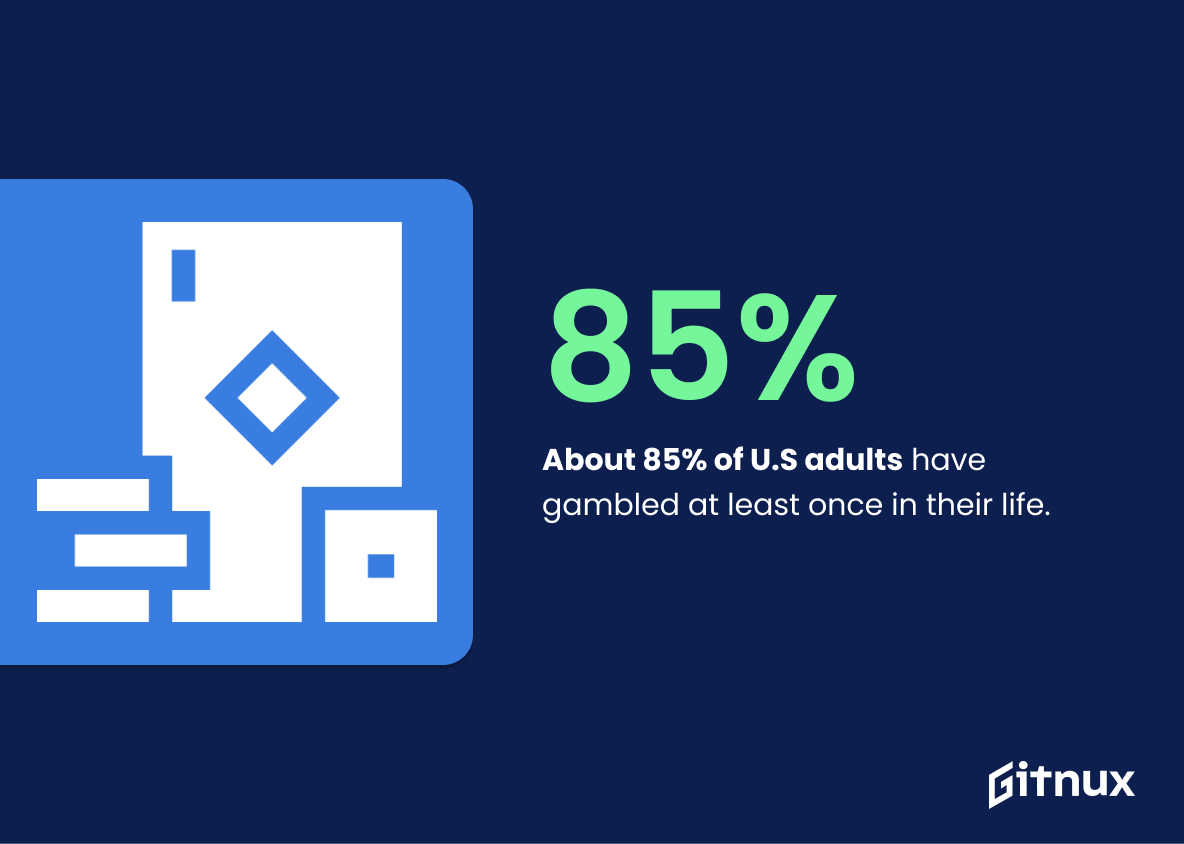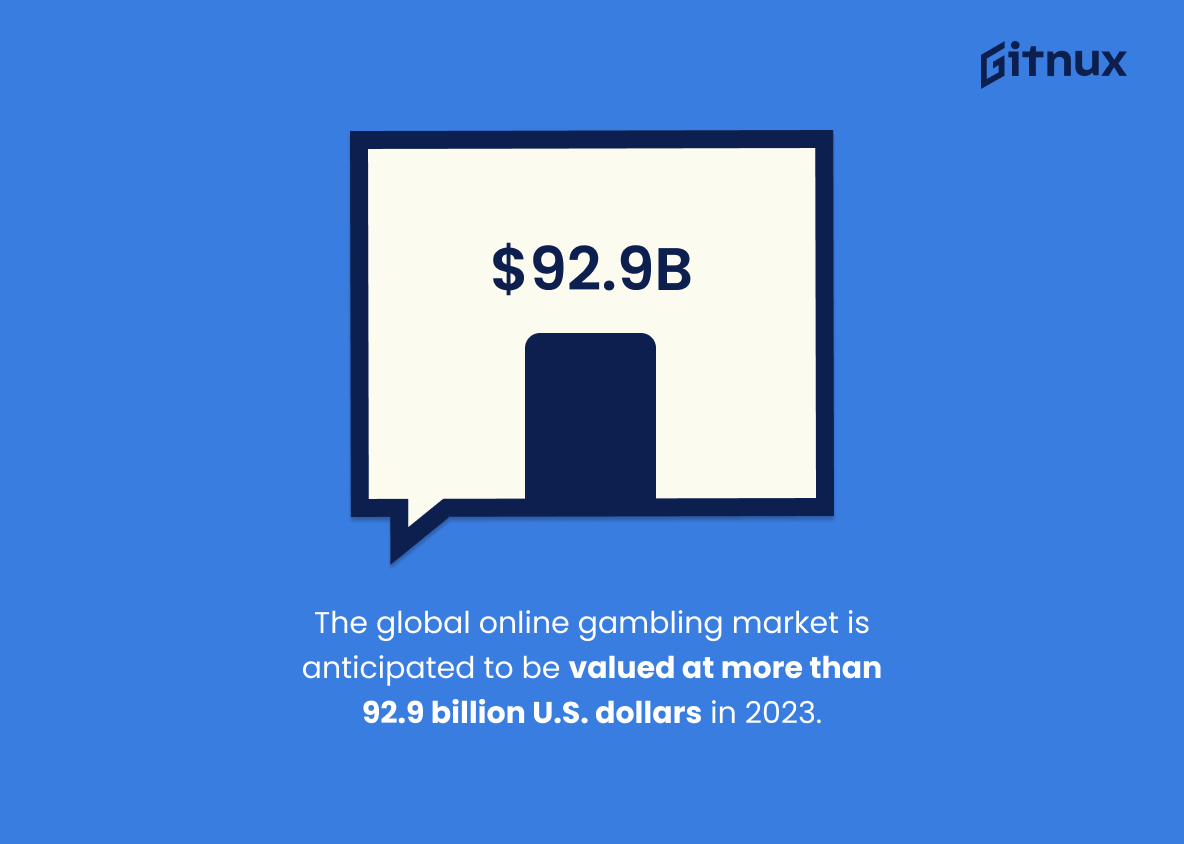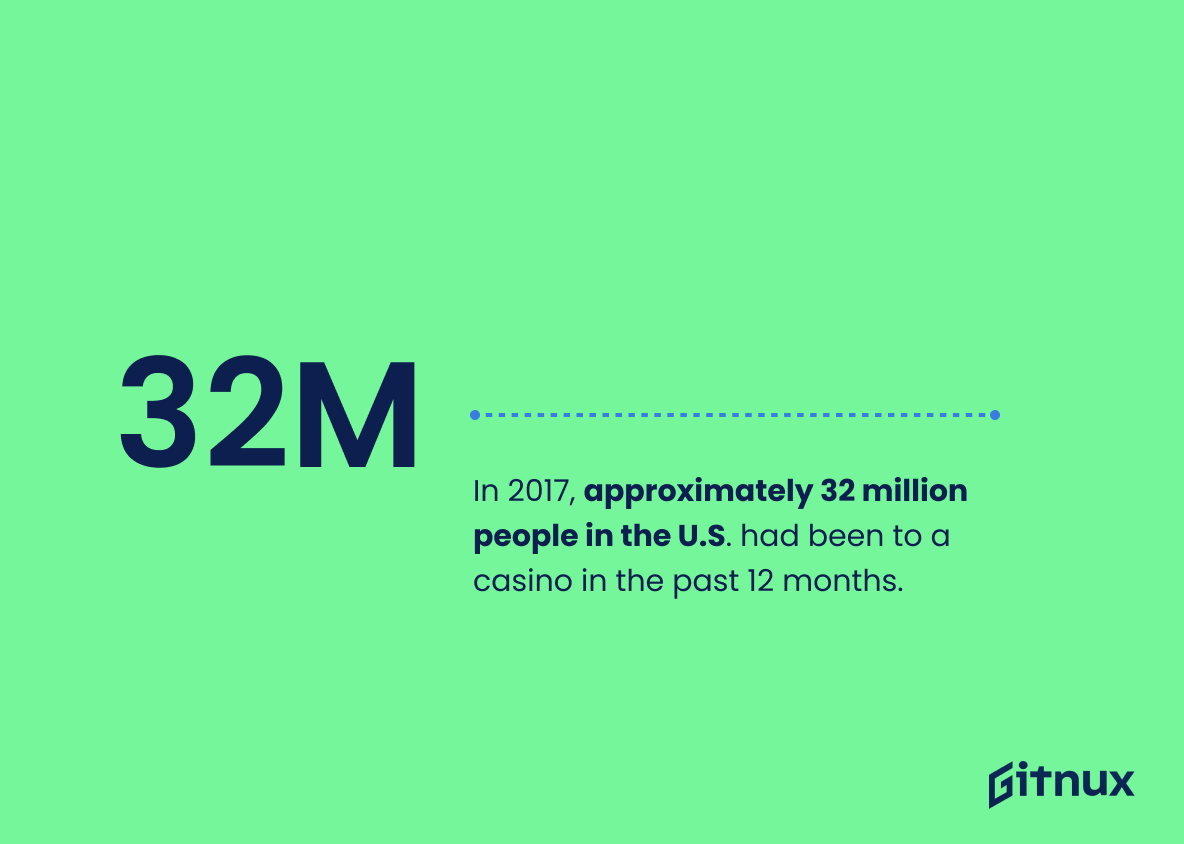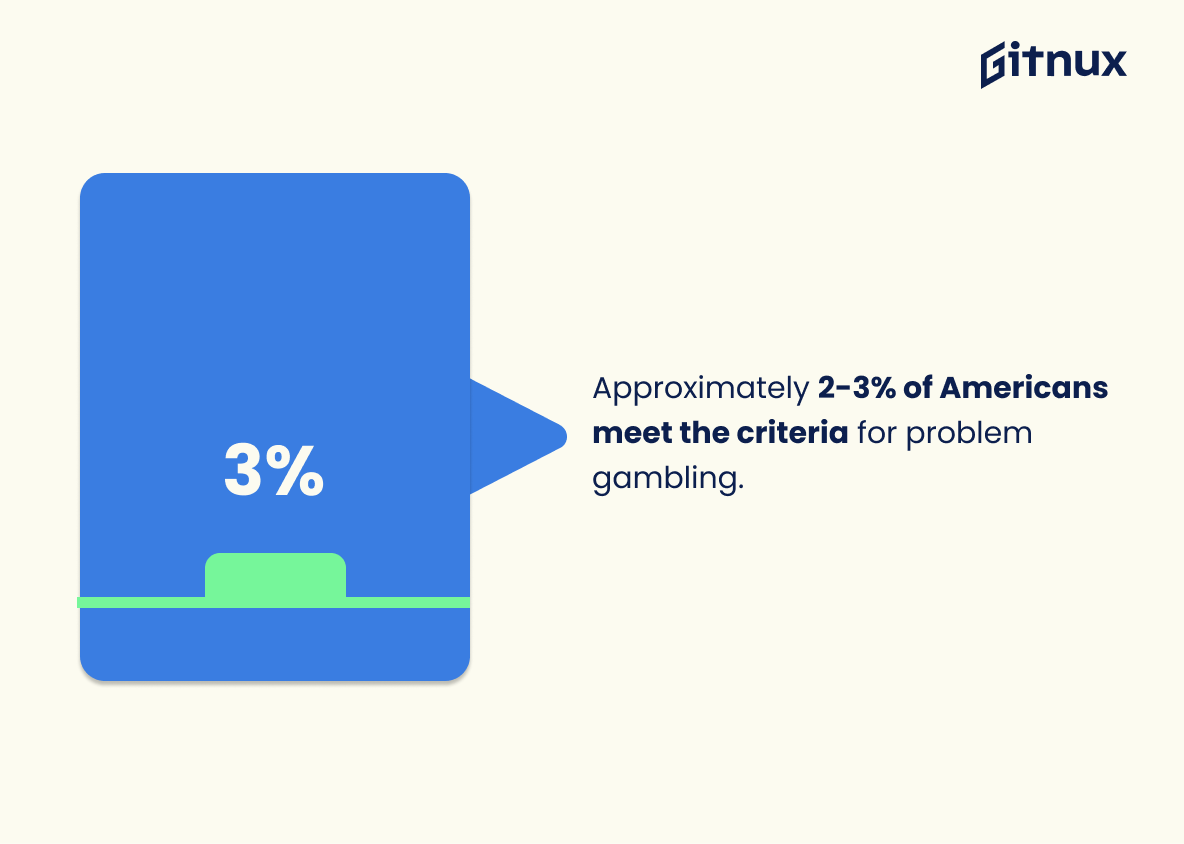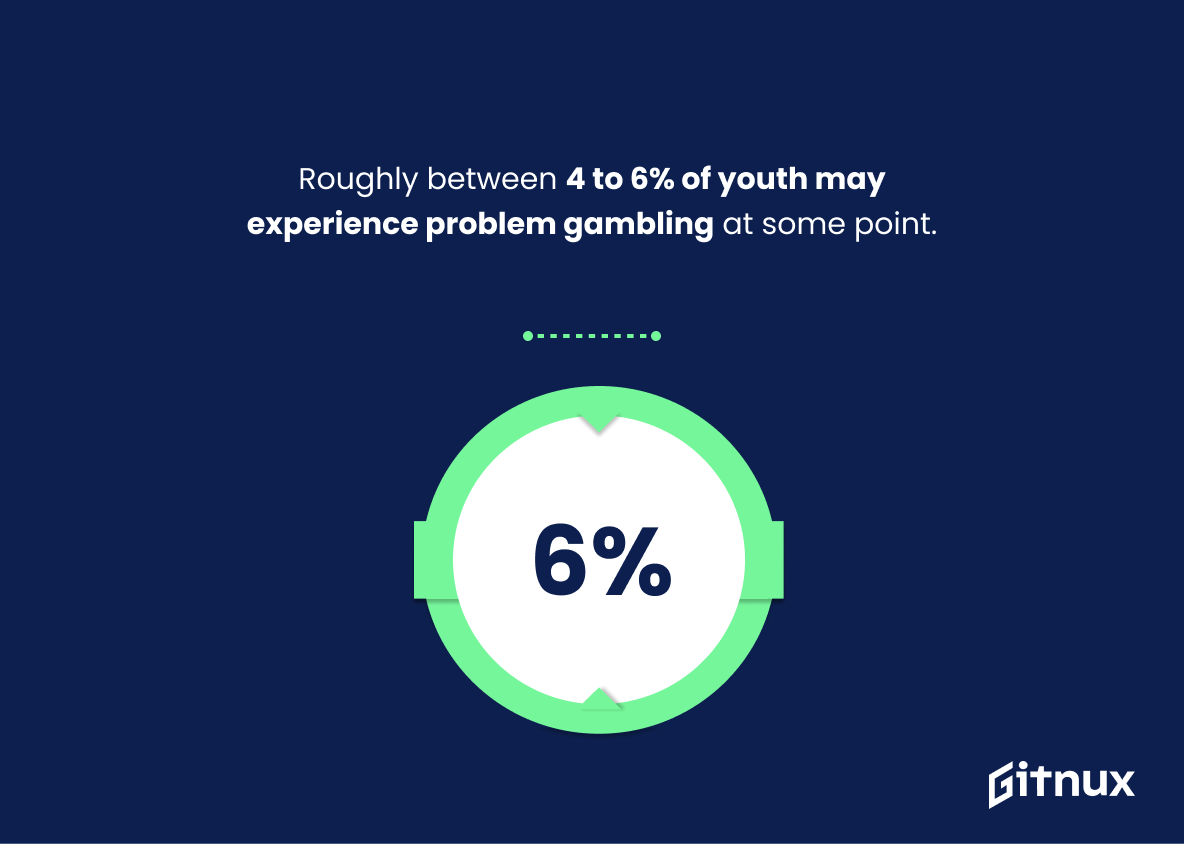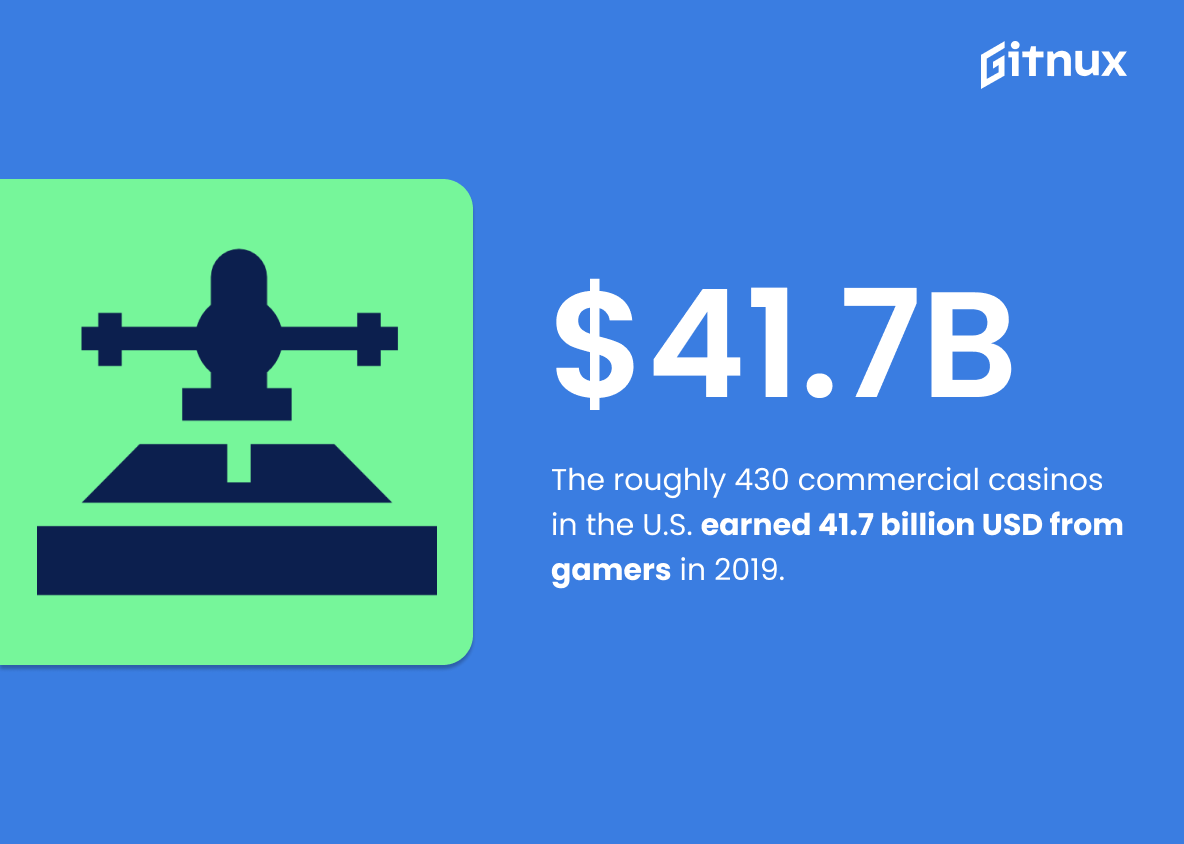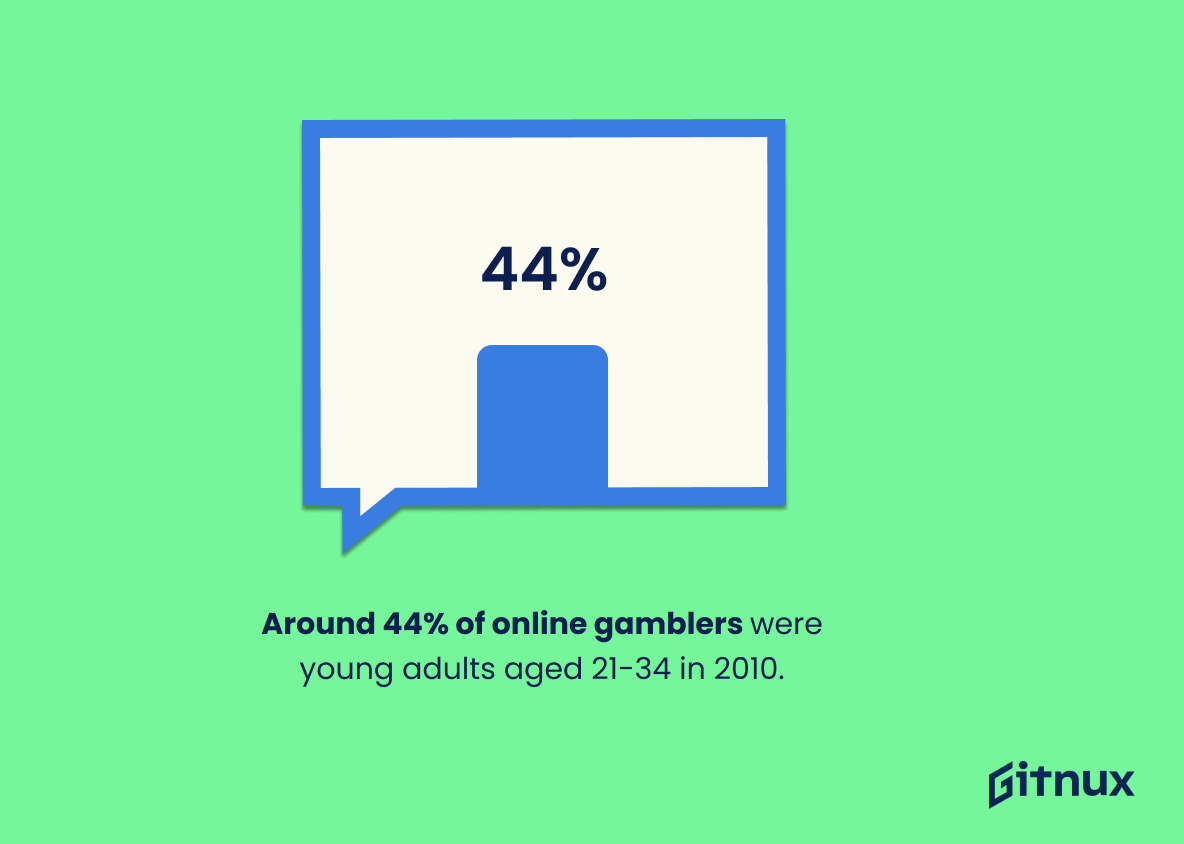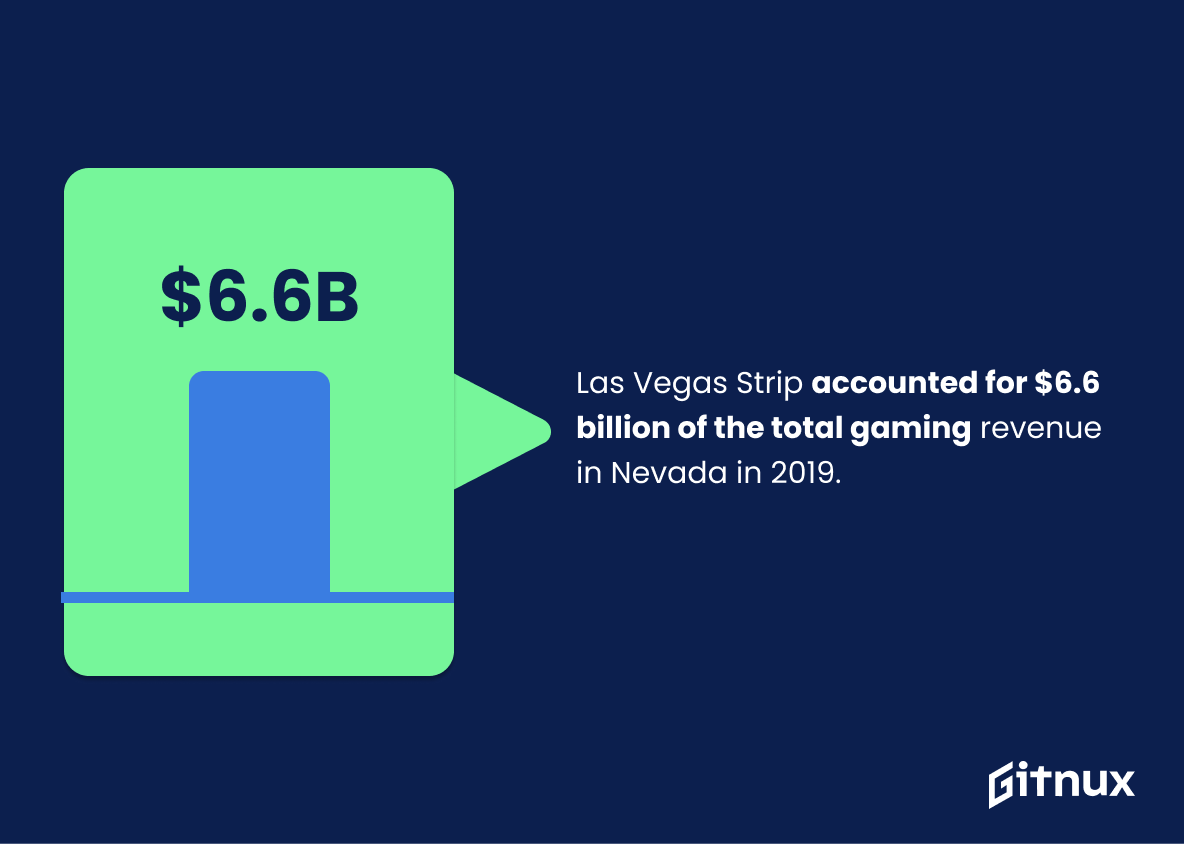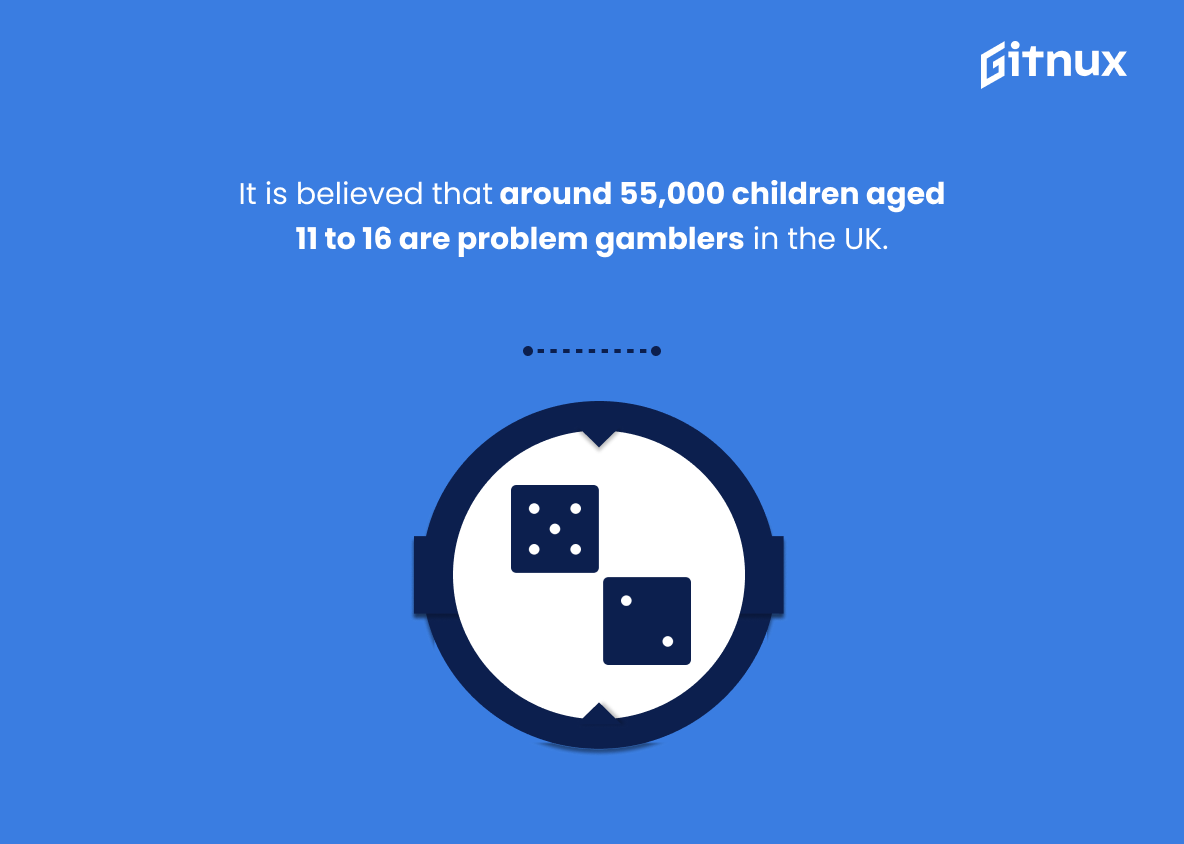In the dynamic world of luck and stakes, where uncertainties generate exhilaration, we delve into the realm of gambling. Unraveling the passion that millions worldwide share, this blog post reveals startling gambling statistics that will make you marvel, or perhaps rethink, your next wager. Whether you are an avid gambler, an intrigued observer, or simply a statistics enthusiast, prepare for an enlightening journey exploring the captivating numbers behind one of the world’s oldest forms of entertainment. It’s a fascinating roll of the dice that uncovers the power, reach, and impact of gambling on global economies, societal attitudes, and personal lives. Let’s venture into the exciting world of gambling statistics, where chance meets data, and every stake has a story to tell.
The Latest Gambling Statistics Unveiled
About 85% of U.S adults have gambled at least once in their life.
Delving into the heart of gambling narratives in America, the statistic uncloaks a remarkable truth – roughly 85% of U.S adults have tested the waters of wagering at least once in their life. This number carries substantial weight in discussions around gambling stats, not merely due to its significance but primarily for the underlying patterns it reflects.
It elucidates the deep-rooted prevalence of the betting culture within American society, thereby fortifying the relevance of a blog focusing on the theme. The magnitude of this statistic also sets the stage for an engaging discourse on the influences enticing this vast majority to gamble, enhancing the richness of the content with wider sociological perspectives.
Deconstructing this statistic further can open doors to discussions around regulations, impacts, and the economics of gambling, offering readers a holistic vignette of the gambling landscape. Thus, this statistic becomes not just a starting line, but a hard-hitting anchor propelling further exploration into the dynamics of the gambling world.
The global online gambling market is anticipated to be valued at more than 92.9 billion U.S. dollars in 2023.
The astounding prediction of the global online gambling market hitting a value north of 92.9 billion U.S. dollars in 2023 provides a compelling backdrop to grasp not just the magnitude, but the kinetic growth and enormity of this industry. This figure serves as a harbinger of a dynamic shift towards online gambling platforms globally, pinpointing the immense competitive arena bloggers and businesses alike are stepping into. Skillfully navigating through this multi-billion dollar sea requires players to be well-informed, thereby enhancing the relevance and indispensability of an insightful statistical overview provided in a blog post regarding gambling statistics.
In 2017, approximately 32 million people in the U.S. had been to a casino in the past 12 months.
Showcasing this statistic is like putting a high-powered spotlight on the enormity of casino gaming participation within America. As we navigate through the terrain of Gambling Statistics, this numerical figure of approximately 32 million people visiting a casino in 2017 becomes much more than just a number. It offers multi-lens views into the gaming habits of the U.S populace, the enticing allure of casino entertainment, the scope of the gambling industry, their marketing effectiveness, and potential pitfalls such as problem gambling. It serves as a pivotal compass, guiding us into exploring and understanding the depth and breadth of these recurring themes within our blog post journey.
Approximately 2-3% of Americans meet the criteria for problem gambling.
In sifting through the landscape of Gambling Statistics, this particular figure catches the eye – Approximately 2-3% of Americans fall into the category of problem gambling. Unmasking an unspoken truth about gaming habits, this statistic forms a pivot, intricately linking the vast world of casual gamers with the smaller, yet significant, subset who unfortunately grapple with gambling issues.
A mere fragment of the total gambling populace might be what this 2-3% represents, yet these numbers act as a lighthouse, guiding us through the dark sea of potential social and economic repercussions. They reveal a stark reality: despite the glitz and glamor that the casino world might project, a slice of our society remains entrapped in its web.
Consider these figures as an urgent siren call, highlighting the need for intervention—from stricter regulations to enhanced support mechanisms—for this particular group. They serve as a constant reminder that in the fast-paced world of gambling, taking a step back to consider the consequences remains paramount. They are not only a cornerstone for a conversation about responsible gambling, but also a catalyst for change, driving us toward a safer and more considerate gaming environment. Not just a statistic then, these figures are a call to realize, reflect, and respond.
Roughly between 4 to 6% of youth may experience problem gambling at some point.
Delving into the realm of youth gambling, a disconcerting revelation emerges, highlighting that as many as 6% of youngsters grapple with problematic gambling behaviors. The distressing number woven into the 4-6% range carries immense significance, particularly in a blog post focusing on gambling statistics. The main thrust of considering such statistics is its capacity to shed light on the prevalence of gambling problems among the most impressionable segment of society – our youth. Beyond just flat numbers, it becomes a window into the socio-psychological implications of early exposure to gambling, showcases the gravity of addiction-related issues among youth, and underscores the urgency for preventative measures and supportive interventions.
The roughly 430 commercial casinos in the U.S. earned 41.7 billion USD from gamers in 2019.
To flow seamlessly with the unspoken rhythm of the exciting realm of gambling, let’s waltz through the dazzling world of numbers. Imagine, if you will, an orchestra of 430 commercial casinos across the U.S. Their symphony, resonating with the thunderous notes of a combined total of $41.7 billion in revenue in the year 2019 alone, is the crescendo that substantiates their pivotal economic role. Their performance is more than a solitary ovation; it provides us with a quantifiable context of understanding. It helps us assess the vast scale and economic significance of gambling, while paving the pathway for a more profound analysis of trends, behaviors, and potential implications within this ever-evolving landscape.
Around 44% of online gamblers were young adults aged 21-34 in 2010.
Capturing the essence of this statistic, it paints a vivid picture of the demographic landscape in the realm of online gambling as of 2010. Highlighted here is the concentration of young adults aged 21-34, who commanded a whopping 44% stake in this virtual betting world. This information serves as a valuable lens through which we can evaluate and dissect the trends, preferences, and potential risks associated with this age group. In essence, the statistic is a compass — showing the direction online gambling took a decade ago, providing key insights for stakeholders, policy makers, and readers interested in the ebb and flow of the gambling scene.
UK gamblers lost a record £14.5 billion between October 2017 and September 2018.
Peering into the depths of the UK’s gambling landscape, an astounding revelation emerges – a swell of £14.5 billion ebbed away from gamblers between October 2017 and September 2018. Beyond serving as a mere figure, this alarming statistic injects realistic perspectives into our dialogue. It holds substantial relevance, transforming the discussion from a bland exploration of numbers to an eye-opening discourse on the stark implications of gambling habits.
Chronicle of this significant economic drainage manifests the perils of unchecked gambling, underlining the urgency for education, regulation, and support systems in the UK’s betting realm. It compels the blog’s readers to grapple with the stark realities of gambling losses, leaving an indelible imprint on their mindset.
This figure, therefore, is not simply a statistic. Instead, it’s a stark reminder of the sweeping financial implications of gambling, carrying the weight of thousands of individuals entrapped in an unending cycle of chance, loss, and hope.
Las Vegas Strip accounted for $6.6 billion of the total gaming revenue in Nevada in 2019.
Highlighted as the shimmering gem of the gambling industry, the Las Vegas Strip’s notable contribution of $6.6 billion to Nevada’s total gaming revenue in 2019 sends a ripple effect through the cascade of gambling statistics. This star-studded figure isn’t just ink on a page, it forms the cornerstone in understanding the magnanimous scale of the gambling sector. It enables us to quantify the economic power that Las Vegas Strip ensnares within the arid desert and showcases just how deeply the tendrils of this adult playground have entwined themselves into the state’s economy. Yet, more than that, it sparks conversations about the role of this glamorous Strip within the larger gaming industry. This statistic challenges us to ponder over the socio-economic implications of the gambling industry and the influence it wields over tourism, job creation, and contributing to state revenues.
It is believed that around 55,000 children aged 11 to 16 are problem gamblers in the UK.
In the labyrinth of gambling statistics, one fact stands out starkly: an estimated 55,000 children aged 11 to 16 in the UK are entrenched in problem gambling. This unsettling figure is another face on the die of risk associated with gambling. When the age of impressionability and growth converges with such an addiction, it can morph into a catalyst for a lifetime of complex issues – not just financial, but also psychological, social, and emotional. Therefore, this statistic should not merely pass through our awareness but should trigger serious contemplation and action. It underlines a growing public health concern that cries out for the need to implement stricter regulations, devise more effective prevention methods, and foster greater societal empathy towards the young lives caught in the gambling web.
22% of online gambling is done on mobile devices.
Peeling back the layers of the intriguing world of gambling, one stumbles upon a significant revelation: a noteworthy 22% of online gambling unfurls within the compact yet potent universe of mobile devices. This revelation isn’t merely a singular statistic—it’s an illuminating glimpse into the evolving gambling landscape and a testament to the irresistible allure of mobile platforms.
In the pulsating heartbeat of the digital revolution, the prevalence of mobile devices has crafted new avenues for online gambling. Thus, in a blog post dissecting Gambling Statistics, it is fascinating to consider these shifting realms, from the grandeur of traditional casinos to the intimacy of smartphones.
The 22% represents the vanguards of change, the early adopters who are trailblazing a path for the future of online gambling. Highlighting this percentage underlines the potential of the mobile market, inviting stakeholders to realign their strategies, thereby ensuring that they meet gamblers right where they are—on their mobile screens.
Australians are the biggest gambling losers, with an estimated loss of over $800 per adult in 2016.
Peeling back the layers on these particularly stark numbers reveals the extent of Australia’s gambling issue: as the nation leading the world in per capita gambling losses, the estimated $800 lost per adult in 2016 illustrates a profound societal problem engaging undercurrents of addiction, mental health, and economic wellness. Unraveling the layers of these numbers across such an extensive, adult population lays bare the prevalence and severity of this issue, setting the stage for a deeper exploration of gambling-related data on a worldwide scale. This remarkable statistic underscores the broader narrative about the global gambling landscape and the socio-economic implications therein, making it instrumental in a blog post about Gambling Statistics.
The online gambling market is set to reach $127.3 billion by 2027.
Unveiling a riveting facet of gambling world, the projected ascent of the online gambling market to an astounding $127.3 billion by 2027 serves as a beacon of the sector’s explosive growth. In the larger tapestry of gambling statistics, this figure underscores the gravitational pull and appeal of digital platforms for gamblers across the globe. It sheds light upon the seismic revolution in gambling habits, tipping the scales from traditional, brick-and-mortar casinos towards the flexibility and accessibility of online platforms. Furthermore, it foretells the immense economic impact, signalling vast potential for innovation and investment in the sector. Sequencing this statistic in an ebb and flow of other gambling statistics in a blog post lends invaluable perspective, making it a must-include data point.
Conclusion
Understanding the intricate world of gambling through statistics offers a perspective that incorporates both its thrills and risks. From online platforms to traditional casinos, the gambling industry’s expansion continues to influence economic structures worldwide. The continuous growth, fueled by the passion of risk-takers and the innovations in technology, exhibits no signs of slowing down. However, with the rising number of problem gamblers, it’s essential to promote responsible gambling. With a balanced approach, the exciting world of gambling can continue to prosper while minimizing its potential negative impacts. Stay informed and wager wisely.
References
0. – https://www.americanaddictioncenters.org
1. – https://www.www.ncpgambling.org
2. – https://www.www.globenewswire.com
3. – https://www.www.statista.com
4. – https://www.www.economist.com
5. – https://www.www.researchgate.net
6. – https://www.www.gamblingcommission.gov.uk
7. – https://www.www.theguardian.com
8. – https://www.www.responsiblegambling.org
9. – https://www.www.bbc.com
